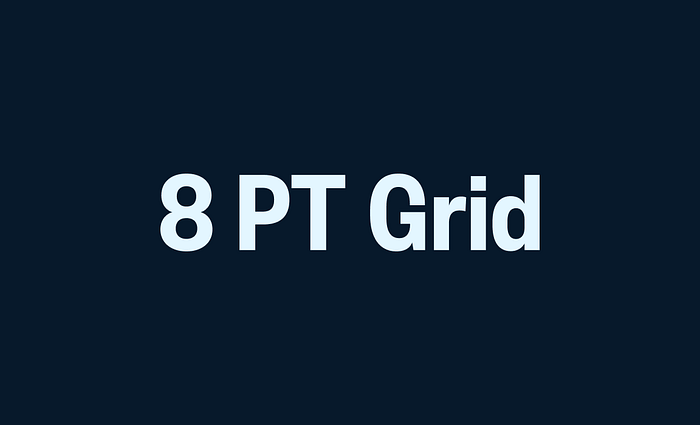How to use the 8pt grid to improve the layouts of your UI Designs

Spacing is everything in UI design.
Forget color, forget typography. Getting the spacing right and you’re halfway there. Why?
- It improves data consumption through better legibility
- It provides customers with a more consistent user experience
- It eliminates guesswork and decision fatigue whilst designing and developing
- It drives consistent scalability
- It conveys meaning by giving elements a visual hierarchy
- If you’re a designer, your output will just… look better.
What is a point (pt) exactly?
Before diving into an 8 pt grid let’s take a step back. A point (pt) is a measurement of space that is dependent on screen resolution. The simplest explanation is that at a ‘1x’ resolution (or @1x) 1pt = 1px.
Back in the day when screens were 1x; 1pt equaled 1px. Then your Retina (2x), and Super Retina (3x) screens came along and things changed. Where designing for the iPhone X (3x) your design would then be rendered with three times as many pixels per inch (ppi).
So for example, if you have an icon at the size of 24px, when you export that icon as an asset @2x and @3x the rendered image would be either 48px (2x), or 72px (3x), which will then look great on Retina and Super Retina displays respectively.
I recommend designing in 1x, then exporting your assets at the different sizes (@2x, @3x etc…) as required. It reduces a lot of confusion.
So why 8pts?
As I mentioned earlier, the variety of screen sizes and pixel densities has continued to increase which can make the job of asset generation more complicated.
Using an even number like 8 to space, and size elements in your design makes scaling for a wide variety of devices much easier, and more consistent.
The basic principle of the 8pt Grid is that you use multiples of 8 (8, 16, 24, 32, 40, 48, etc…) to margins, padding, and sometimes dimensions, on elements inside of your design.
I always think in 8s now when creating my UIs, with the odd occasion when I’ll call upon 4pt, for example when designing for Mobile where the screen real estate is limited.
Hard, or Soft Grid method?
I prefer a soft grid. When I’ve created UIs before I’ve always opted to use the Soft Grid approach, where you simply measure 8pt increments between individual elements in your design.
This as opposed to the Hard Grid approach which places elements into a grid pattern defined in 8pt increments which I find a little too rigid and not practical for when it comes time to code up a design.
Icons & The 8pt Grid
When it comes to icons and the 8pt Grid, you will find that most of them have been designed to sit inside of frames that are multiples of 8 (16x16, 24x24, 32x32 etc…)
If not, then make sure that any icon that you drop into your design you frame it inside a container that uses a value that is a multiple of 8 (ie; 24x24). This will just enable icons to be laid out consistently within your UIs.
Typography & The 8pt Grid
When it comes to Type, using a 4pt Baseline Grid alongside the 8pt Grid gives you a seamless vertical rhythm throughout your designs.
Simply align your type to a Baseline Grid of 4, which uses a line-height value that is a multiple of 4 (4, 8, 12, 16, 20 etc…)
Why 4? Well for me personally, I’ve found that scaling my Baseline Grid in multiples of 8 in the past has just pushed the text too far apart when working with certain text sizes.
The 4pt Baseline Grid gives you more fine-grained control and brings much better results.
Final Thoughts
Hopefully, with this brief overview of the 8pt Grid you’ll now feel confident in laying out your UIs faster, with more consistency, less guesswork, and fewer design decisions required.
